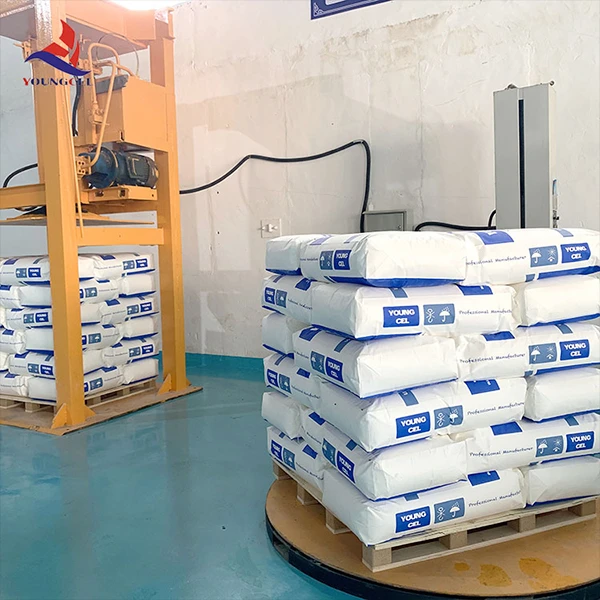The Importance of HPMC in Construction Chemicals
Hydroxypropyl Methylcellulose (HPMC) is a versatile and essential ingredient in the field of construction chemicals. As a non-ionic cellulose ether, HPMC is widely recognized for its water-retaining properties, thickening abilities, and superior binding characteristics, making it an indispensable component in various construction materials such as adhesives, mortars, and other building products. This article delves into the significance of HPMC in construction, its applications, and its benefits.
What is HPMC?
HPMC is derived from natural cellulose, which undergoes a series of chemical modifications to enhance its properties. The resulting compound is a white, odorless powder that is soluble in water, forming a gel-like consistency upon dispersion. Its chemical structure allows it to interact favorably with various other materials in construction applications, contributing to improved performance and durability.
Applications of HPMC in Construction
1. Adhesives HPMC is commonly used in tile adhesives, wall glues, and other bonding materials. Its water-retaining properties ensure that the adhesive remains workable for extended periods, allowing for better manipulation and positioning of tiles before curing. This characteristic also aids in preventing the adhesive from drying too quickly, which could lead to bond failure.
2. Mortars In cement-based systems, HPMC enhances the workability and flow of mortars, improving their consistency and application. It also helps retain moisture, which is crucial for proper curing and hydration of cement, thus contributing to the overall strength and longevity of the structure.
3. Render and Plaster HPMC is utilized in rendering and plastering compounds to improve spreadability and adhesion to various substrates. It enhances the mechanical strength of the finished product while providing a smooth texture, making it suitable for both internal and external applications.
construction chemical hpmc

4. Grouts In grouting applications, HPMC improves the density and reduces the water content in the mixture, resulting in a more robust and resistant finished product. It helps prevent cracking and ensures that the grout adheres well to surfaces, providing a long-lasting solution for various construction needs.
Benefits of Using HPMC
1. Enhanced Workability One of the primary benefits of HPMC in construction chemicals is its ability to improve the workability of materials. This allows for easier application and finishing, thus reducing labor costs and time.
2. Water Retention HPMC significantly retains water in mixtures, which is vital for ensuring that the ingredients cure properly. This property is particularly important in regions with high evaporation rates or in applications where quick drying is undesirable.
3. Non-toxic and Environmentally Friendly Being derived from natural cellulose, HPMC is considered a safe and environmentally friendly additive. It does not emit harmful fumes and is suitable for both indoor and outdoor applications.
4. Versatility HPMC can be tailored to meet specific requirements by adjusting its viscosity and other properties. This versatility makes it applicable in a wide range of construction scenarios, from residential buildings to large-scale commercial projects.
Conclusion
HPMC is a pivotal component in construction chemicals, offering myriad benefits that enhance the performance and quality of various building materials. Its impressive properties, such as excellent water retention, versatility, and non-toxicity, ensure that it will continue to be a preferred choice for construction professionals worldwide. As the construction industry evolves and seeks more innovative solutions, HPMC stands out as a reliable and efficient additive that contributes to both sustainability and performance in building applications.
-
Rdp Powder: Key Considerations for Wholesalers in the Building Materials IndustryNewsJul.08,2025
-
Key Considerations for Wholesalers: Navigating the World of Hpmc - Based ProductsNewsJul.08,2025
-
Hpmc Detergent: Key Considerations for WholesalersNewsJul.08,2025
-
Key Considerations for Wholesalers: China Hpmc For Tile Adhesive, Coating Additives, Concrete Additives, and MoreNewsJul.08,2025
-
Crucial Considerations for Wholesalers: Navigating the World of Construction MaterialsNewsJul.08,2025
-
Key Considerations for Wholesalers Sourcing Additive For Cement, Additive For Concrete, Additive For Putty from Additive Manufacturer Shijiazhuang Gaocheng District Yongfeng Cellulose Co., Ltd.NewsJul.08,2025




